About
What is WEST?
WEST (Without Empty STates) is an open source software package (released under GPLv3) that performs large-scale, many-body perturbation theory calculations providing electronic and optical spectroscopic characterization of complex materials. Its development is supported by the U.S. Department of Energy (MICCoM).
Features
GW self-energy calculation
- without explicit calculation of virtual orbitals
- with spectral decomposition of dielectric matrices (no explicit diagonalization and storage)
- with full frequency integration
- with fully relativistic pseudopotentials
- starting from semi-local and hybrid functionals
- with GPU-acceleration
Quantum defect embedding theory (QDET)
- without explicit calculation of virtual orbitals
- with GPU-acceleration
- interfaced with quantum simulations on quantum computers
Time-dependent density-functional theory (TD-DFT)
- without explicit calculation of virtual orbitals
- with reduced scaling using orbital localization
- with semi-local and hybrid functionals
- spin-conserving or spin-flip excitations
- analytical forces
- with GPU-acceleration
Solution of the Bethe Salpeter equation (BSE)
- without explicit calculation of virtual orbitals
- without explicit calculation of dielectric matrices
- with reduced scaling using orbital localization
- starting from semi-local and hybrid functionals
- spin-conserving or spin-flip excitations
- with GPU-acceleration
Calculation of finite temperature effects (under development)
- without explicit calculation of virtual orbitals
- coupled evaluation of electron-electron and electron-phonon self-energies
Scalability demonstrated up to 500k CPU cores, and 26k GPUs.
WEST was used for calculations of solids, liquids, nanostructures, molecules, interfaces, including samples with ~10,000 electrons and hundreds of snapshots extracted from first principles simulations with hundreds of electrons. Check the publications page.
WEST is interfaced with Quantum ESPRESSO and Qbox.
Quantum Simulations
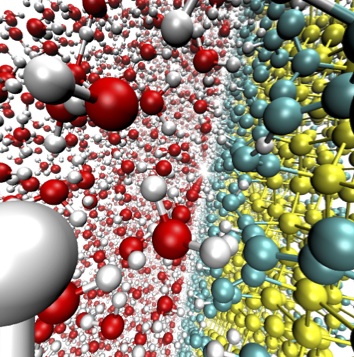
Quantum simulations solve approximate forms of the basic equations of quantum mechanics (e.g. within Density Functional Theory (DFT), using semi-local or hybrid functionals), with the aim of computing physical and chemical properties of molecules and materials, including solids, liquids and nanostructures. WEST is used to study excited state properties of electrons, starting from the solutions of the Kohn-Sham equations and geometries determined by carrying out ab initio molecular dynamics (AIMD) or ionic minimizations, e.g. with the Quantum ESPRESSO or Qbox code.
Excited States
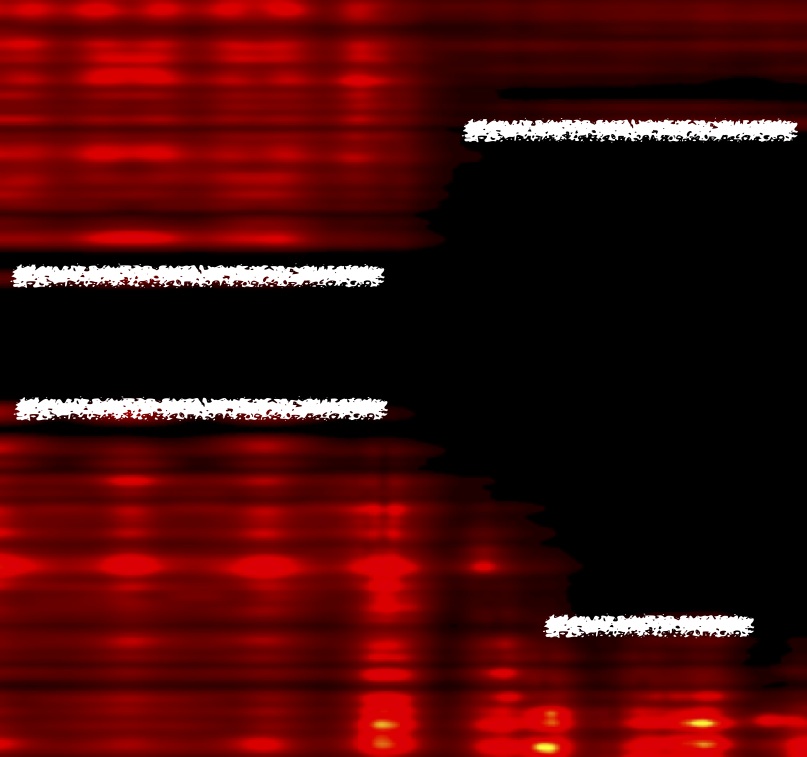
Electronic excited state properties are obtained within Many Body Perturbation Theory (MBPT). MBPT is a Green's function based approach where electronic excitations are obtained by solving an approximate form of the Dyson with a so called GW self-energy, and optical excitations are obtained by solving the Bethe-Salpeter equation (BSE). WEST enables GW calculations without explicit evaluation of empty electronic states, by using techniques based on the spectral decomposition of the dielectric matrix, whose eigenvectors are also employed as a basis for the frequency dependent density-density response function. The calculation of these eigenvectors is based on Density Functional Perturbation Theory (DFPT) and a Lanczos algorithm is utilized to obtain simulateously the self-energy at multiple frequencies. As an example, the interpretation and prediction of photoemission and optoelectronic spectra of molecules and solids rely on the ability to compute transitions between occupied and virtual electronic states from first-principles, as well as their lifetimes. Within the growing field of materials for energy conversion processes, there is an increasing need to understand solar energy conversion in photovoltaics, solar to fuel generation in photocatalysis, and electrochemical reactions involved in energy storage processes. Predictive tools that allow for detailed investigations of the excited state properties of nanostructures and complex interfaces are thus of key importance.
Nanostructures and Materials
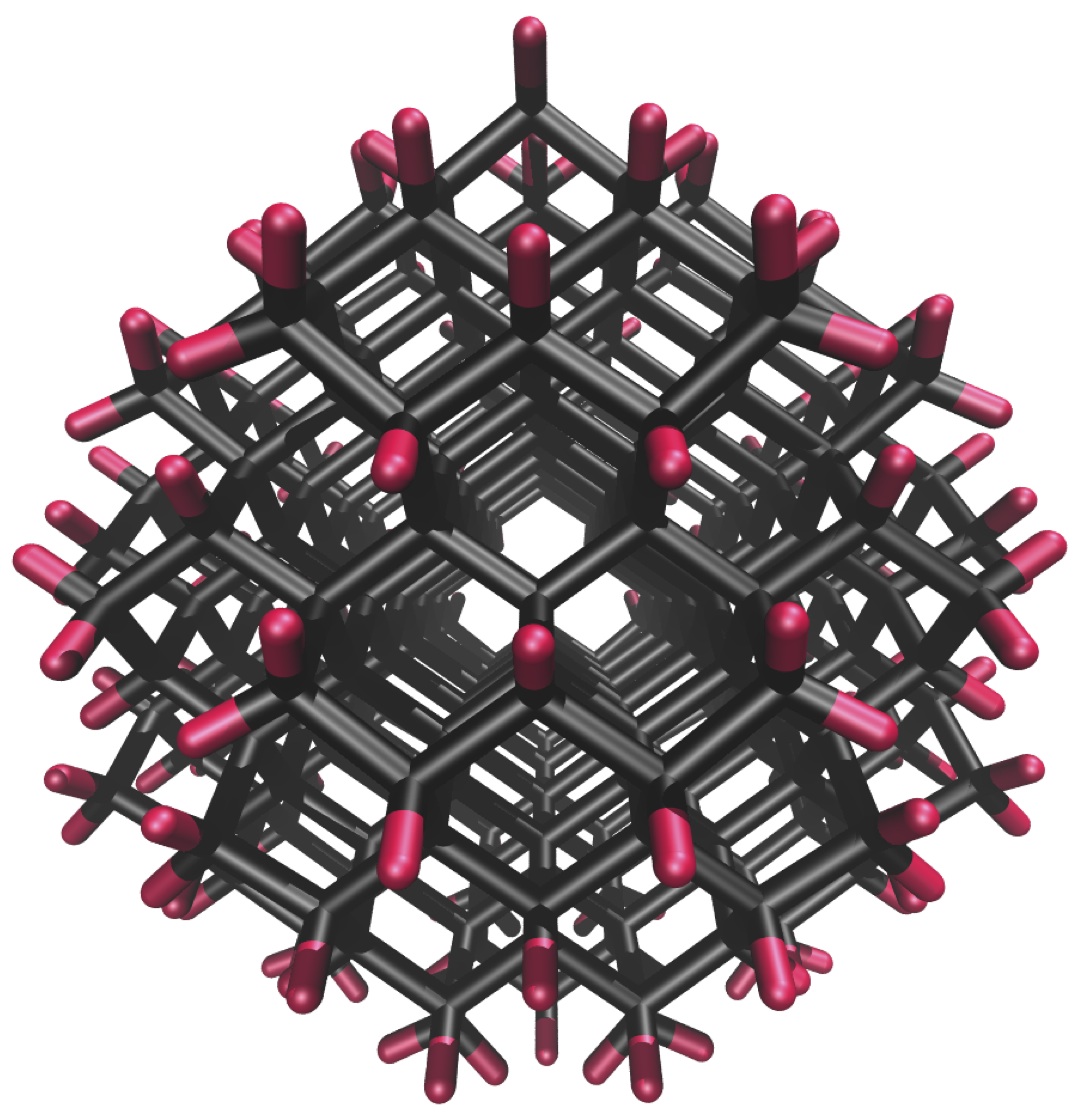
The search for cheap, earth abundant materials for solar cells and photo-electrodes for photocatalysis calls for detailed investigations of the efficiency of light absorption in materials, inclusive of interfaces and nanostructures. Theoretical frameworks and efficient computer simulations are needed to help interpret a growing body of complex measurements on light absorbers, and to predict optimal systems for harvesting sun light. In the field of energy storage, experimental investigations of chemical reactions at interfaces and of solid/liquid interfaces are in great demand. The capability to efficiently compute accurate electronic structure with WEST for large-scale systems permits the microscopic study of interfacial process related to energy conversion.
Large Scale
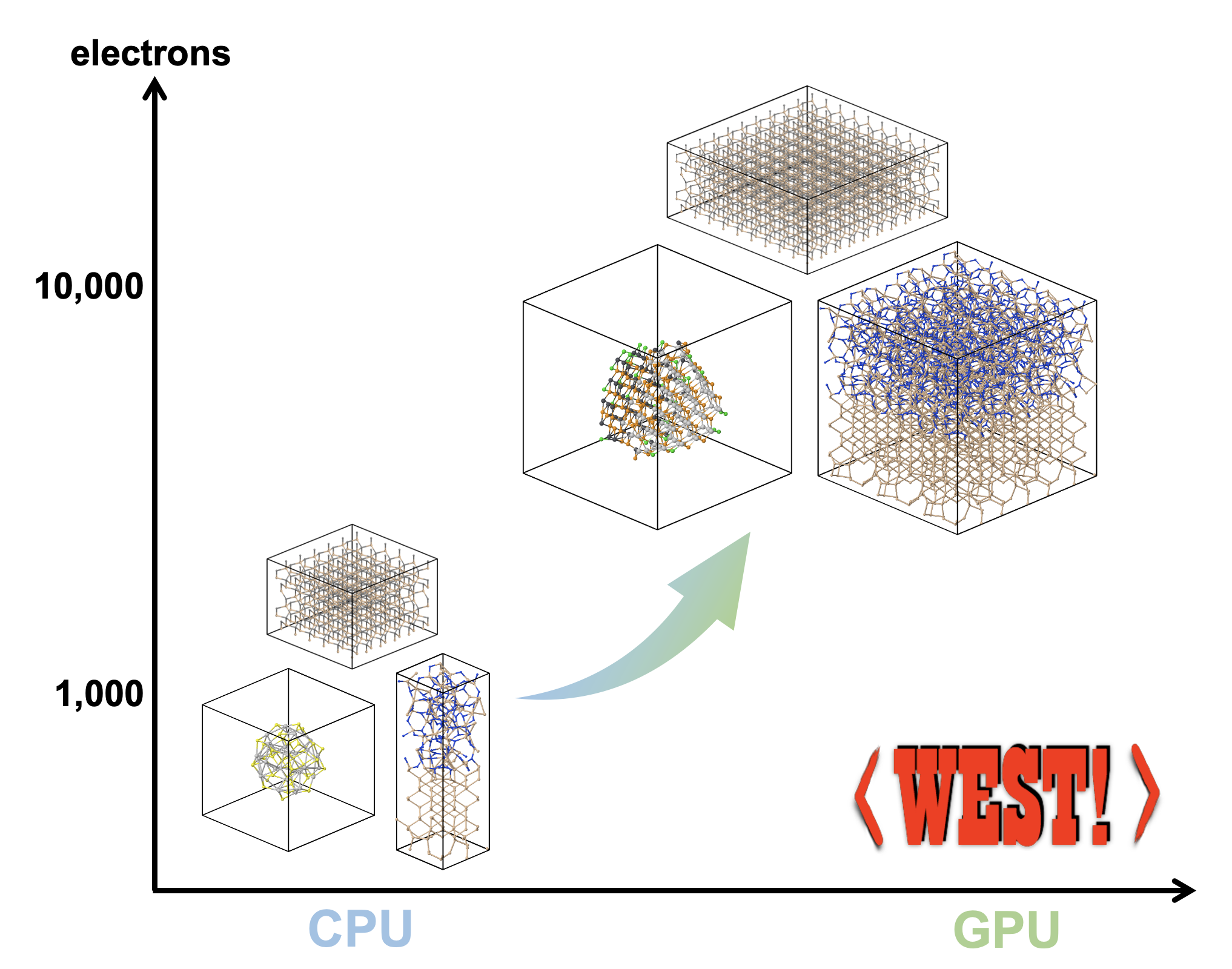
The WEST code uses iterative techniques, based on the Density Functional Perturbation Theory (DFPT), which avoid the explicit calculation of virtual electronic states and the inversion of large dielectric matrices. This permits to evaluate the electronic properties of systems of unprecedented size, which are necessary to describe realistic solid/liquid interfaces, defective materials and nanostructures.
Massively Parallel
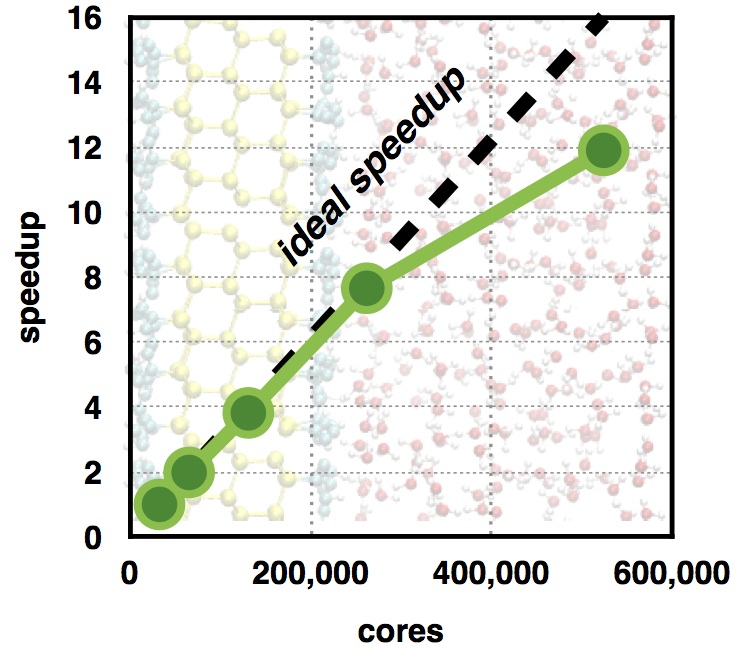
WEST is a hybrid MPI+OpenMP+GPU code mainly written in modern Fortran and designed for massively parallel high performance computing architectures. The WEST workflow is divided in parallel tasks that efficiently distribute both the computational load and data structures resulting in superior scalability. For large-scale systems, WEST was shown to scale up to 500k CPU cores or 26k GPUs on leadership supercomputers.
Open Source

WEST is an open source software package, licensed under the GPL, that complies with the Open Source Definition. Open source distributed codes foster the development of open science. The methods and algorithms implemented in WEST are made available to public inspection to promote knowledge transfer and data reproducibility and to catalyze further scientific software developments. Parties interested in adding new features to WEST are encouraged to contact the WEST development team.